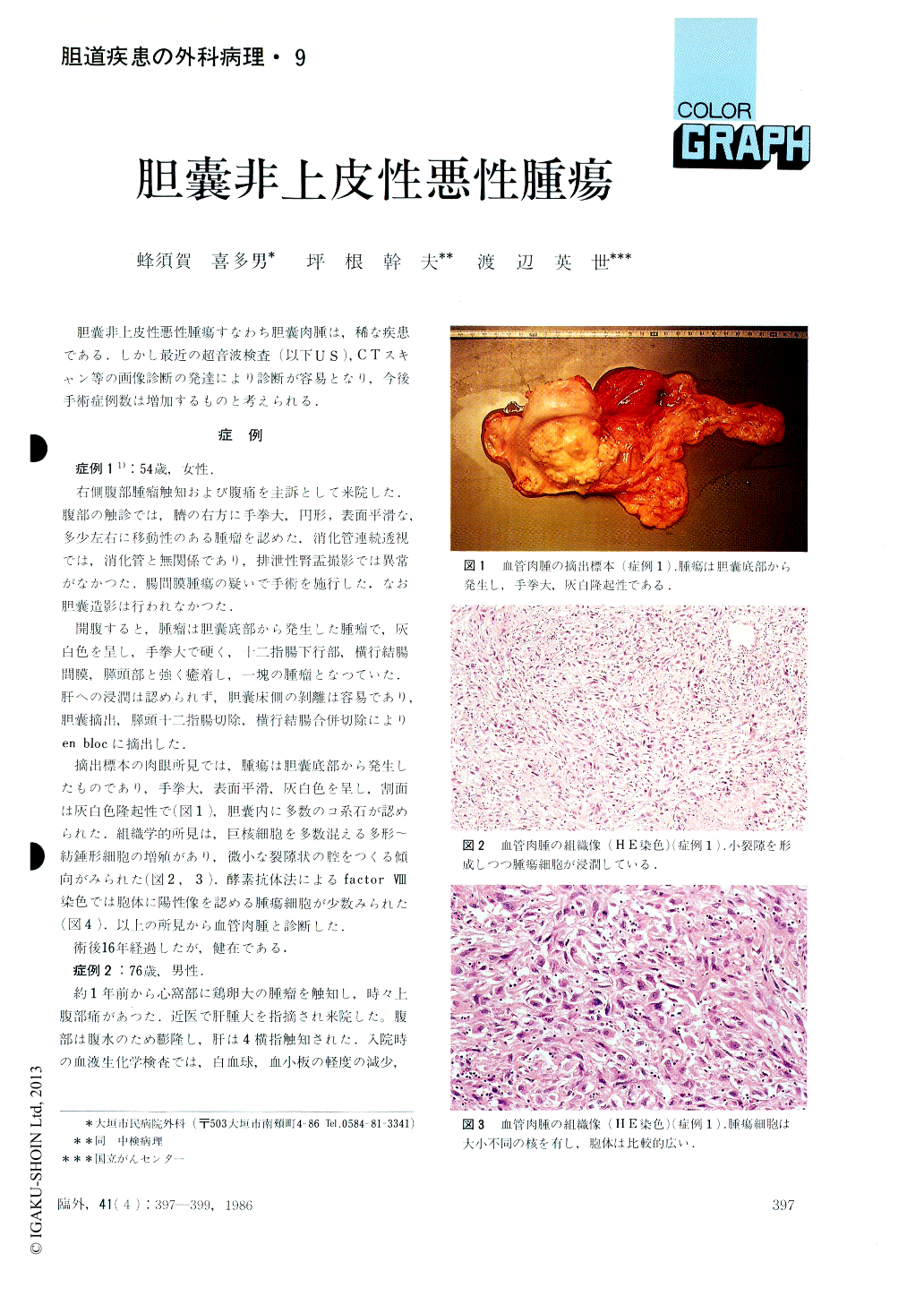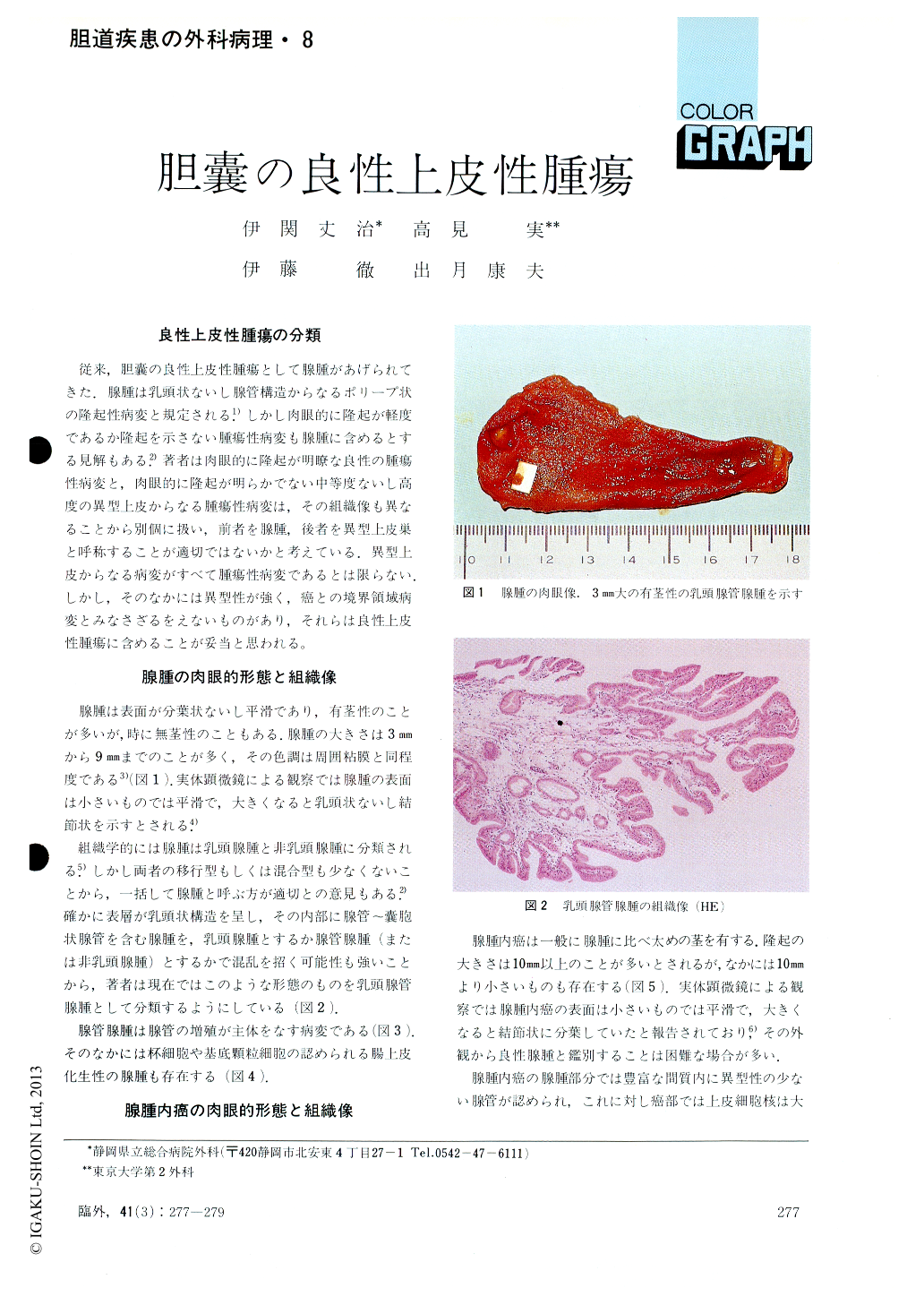- 著者
- 水野 章子 泉 朋子 後藤 健 奥田 日実子 栗山 廉二郎 神谷 康司 有村 義宏 後藤 淳郎 荒井 香代子 清水 阿里 下村 有希子 高野 真理 鈴木 日和 木村 里緒 幸地 優子
- 出版者
- 一般社団法人 日本透析医学会
- 雑誌
- 日本透析医学会雑誌 (ISSN:13403451)
- 巻号頁・発行日
- vol.54, no.5, pp.219-228, 2021
<p>【目的】血液透析(HD)患者の赤血球容積分布幅(RDW),平均赤血球ヘモグロビン量(MCH)と腎性貧血治療との関連性を明らかにする.【対象】赤血球造血刺激因子製剤(ESA)投与中のHD患者926例.【方法】①RDWの中央値で分け比較.RDWを目的変数とした重回帰分析を施行.②赤血球数(RBC),MCHで分けESA量などを比較.③フェリチン,トランスフェリン飽和度で鉄欠乏・充足群に分けESA量などを比較.④鉄剤投与経路の差を比較.【結果】RDW高値群はMCH低値でESA量が多かった.RDWの規定因子はESA量,MCHなどであった.MCH 30 pg未満群はRDWが高くESA量が多かった.経口鉄剤群はRDWが低くESA量が少なかった.【結語】RDW高値,MCH低値のHD患者は赤血球の鉄利用低下が併存しESA量が多かった.MCHを指標に鉄剤を投与すればESAを減量できる可能性がある.</p>
1 0 0 0 IR ヨシュアのカナン侵入の年代決定に就て
- 著者
- 山崎 亨 Toru Yamazaki
- 出版者
- 基督教研究会
- 雑誌
- 基督教研究 = Kirisutokyo Kenkyu (Studies in Christianity) (ISSN:03873080)
- 巻号頁・発行日
- vol.19, no.1, pp.26-40, 1941-11-10
論文
- 著者
- 川田 秀道 中村 忍 黒木 英郁 大倉 順 小野 博志 竹下 正則 福留 良文 前田 孝
- 出版者
- 公益社団法人日本放射線技術学会
- 雑誌
- 日本放射線技術學會雜誌 (ISSN:03694305)
- 巻号頁・発行日
- vol.63, no.9, 2007-09-20
1 0 0 0 羽島市史
- 著者
- 羽島市史編纂委員会 編
- 出版者
- 羽島市
- 巻号頁・発行日
- vol.第1巻, 1964
1 0 0 0 武生市史
- 著者
- 武生市史編纂委員会 編
- 出版者
- 武生市
- 巻号頁・発行日
- vol.資料編 [第3] (人物・系譜・金石文), 1966
1 0 0 0 今立郡誌
- 著者
- 福井県今立郡誌編纂部 編纂
- 出版者
- 臨川書店
- 巻号頁・発行日
- 1973
1 0 0 0 胆嚢非上皮性悪性腫瘍
1 0 0 0 胆嚢の良性上皮性腫瘍
良性上皮性腫瘍の分類 従来,胆嚢の良性上皮性腫瘍として腺腫があげられてきた.腺腫は乳頭状ないし腺管構造からなるポリープ状の隆起性病変と規定される.1)しかし肉眼的に隆起が軽度であるか隆起を示さない腫瘍性病変も腺腫に含めるとする見解もある.2)著者は肉眼的に隆起が明瞭な良性の腫瘍性病変と,肉眼的に隆起が明らかでない中等度ないし高度の異型上皮からなる腫瘍性病変は,その組織像も異なることから別個に扱い,前者を腺腫,後者を異型上皮巣と呼称することが適切ではないかと考えている.異型上皮からなる病変がすべて腫瘍性病変であるとは限らない.しかし,そのなかには異型性が強く,癌との境界領域病変とみなさざるをえないものがあり,それらは良性上皮性腫瘍に含めることが妥当と思われる。
- 著者
- アルカンタラ プリモアラン 今井 弘
- 出版者
- Japan Concrete Institute
- 雑誌
- コンクリート工学論文集 (ISSN:13404733)
- 巻号頁・発行日
- vol.10, no.2, pp.13-28, 1999
A new approach in the classification of the resulting failure mode, whether shear, bond splitting or flexure, for reinforced concrete columns is presented. Particular emphasis is placed on the analysis of the strain distribution in the main reinforcement based on the truss and arch model theory. Failure mode prediction from the proposed alternative method is compared with results from several series of column experiments. The proposed method is shown to provide a high level of precision in classifying failure modes with the proper consideration of the presence of inner rows of main bars and the effect of axial loading.
- 著者
- Akihiko Wada Yuya Saito Shohei Fujita Ryusuke Irie Toshiaki Akashi Katsuhiro Sano Shinpei Kato Yutaka Ikenouchi Akifumi Hagiwara Kanako Sato Nobuo Tomizawa Yayoi Hayakawa Junko Kikuta Koji Kamagata Michimasa Suzuki Masaaki Hori Atsushi Nakanishi Shigeki Aoki
- 出版者
- Japanese Society for Magnetic Resonance in Medicine
- 雑誌
- Magnetic Resonance in Medical Sciences (ISSN:13473182)
- 巻号頁・発行日
- pp.mp.2021-0068, (Released:2021-12-10)
- 参考文献数
- 32
- 被引用文献数
- 5
Purpose: Myelination-related MR signal changes in white matter are helpful for assessing normal development in infants and children. A rule-based myelination evaluation workflow regarding signal changes on T1-weighted images (T1WIs) and T2-weighted images (T2WIs) has been widely used in radiology. This study aimed to simulate a rule-based workflow using a stacked deep learning model and evaluate age estimation accuracy.Methods: The age estimation system involved two stacked neural networks: a target network-to extract five myelination-related images from the whole brain, and an age estimation network from extracted T1- and T2WIs separately. A dataset was constructed from 119 children aged below 2 years with two MRI systems. A four-fold cross-validation method was adopted. The correlation coefficient (CC), mean absolute error (MAE), and root mean squared error (RMSE) of the corrected chronological age of full-term birth, as well as the mean difference and the upper and lower limits of 95% agreement, were measured. Generalization performance was assessed using datasets acquired from different MR images. Age estimation was performed in Sturge–Weber syndrome (SWS) cases.Results: There was a strong correlation between estimated age and corrected chronological age (MAE: 0.98 months; RMSE: 1.27 months; and CC: 0.99). The mean difference and standard deviation (SD) were −0.15 and 1.26, respectively, and the upper and lower limits of 95% agreement were 2.33 and −2.63 months. Regarding generalization performance, the performance values on the external dataset were MAE of 1.85 months, RMSE of 2.59 months, and CC of 0.93. Among 13 SWS cases, 7 exceeded the limits of 95% agreement, and a proportional bias of age estimation based on myelination acceleration was exhibited below 12 months of age (P = 0.03).Conclusion: Stacked deep learning models automated the rule-based workflow in radiology and achieved highly accurate age estimation in infants and children up to 2 years of age.
1 0 0 0 OA バスケットボールの速攻における有利性の検証並びにミスプレーの構造分析
- 著者
- 安 舒揚 佐藤 久夫 An shuyang satou Hisao 仙台大学 仙台大学 Sendai University Sendai University
- 雑誌
- 仙台大学大学院スポーツ科学研究科修士論文集 (ISSN:13486357)
- 巻号頁・発行日
- vol.14, pp.1-8, 2013-03-31
1 0 0 0 OA 甘味の化学(生活の中の化学)
- 著者
- 栗原 良枝
- 出版者
- 公益社団法人 日本化学会
- 雑誌
- 化学と教育 (ISSN:03862151)
- 巻号頁・発行日
- vol.45, no.2, pp.69-71, 1997-02-20 (Released:2017-07-11)
- 参考文献数
- 3
味覚は生活の中では, 食物のおいしさに関係する大切な感覚である。ここでは, 甘味を中心にして, 味覚を化学の目で眺めることにする。甘味に関しては, 昔から数多くの研究がなされてきたが, 甘味のメカニズムは甘味受容体の実体を含めて依然として不明な点が多い。ここで紹介するミラクリンやクルクリンは味を変えるという特異な作用をもっているタンパク質である。これらの物質は新しい甘味物質として期待されるばかりでなく, その活性部位が解明できれば, 新しい甘味剤をデザインすることも可能になるかもしれない。
- 著者
- 山本 竜也 三宅 博行 山口 秀樹 吉澤 望
- 出版者
- 日本建築学会
- 雑誌
- 日本建築学会環境系論文集 (ISSN:13480685)
- 巻号頁・発行日
- no.783, pp.451-461, 2021-05
- 被引用文献数
- 1
<p>While improvements in the energy-saving performance of buildings are required, productivity improvements and health management are also getting more necessary due to work style reforms. This trend demands the development of new methods which enable us to quantitatively assess the physiological and psychological quality of the built environment from the design stage. In terms of the light and visual environment, spaciousness is one of the factors that affect the comfort, intellectual productivity, and health of users of interiors.</p><p>In this research, definition of "spaciousness" by Inui will be used, but the purpose of this study was to propose a comprehensive quantitative spaciousness evaluation index of the interiors, including spaces of different sizes and shapes, considering various factors related to light and visual environment.</p><p>In recent years, technological developments have made complex data processing possible and expanded the range of experiment methods. VR technology is one of them, and there are many merits of using it in promoting spaciousness evaluation, such as to virtually compare spaces that are separated from each other by a great distance. This research aims to verify the validity of using VR with HMDs for spaciousness evaluation, through subject experiments in six real spaces with different volumes and usages. Volumes ranged from a minimum of 35 m<sup>3</sup> to a maximum of 1,969 m<sup>3</sup>, and vertical illuminance ranged from 30 lx to 720 lx at the subject's observation position. Openings were blocked from line of sight and daylight was shut off by closing the blinds. VR spaces with several lighting environments for each space were reproduced. In experiments using ME method, we compared and verified the cases where the real space and the VR space were used as the reference stimulus for the comparative stimulus of the real space. Major findings are as follows:</p><p> 1) In order to verify how well the VR space could reproduce the real space from the point of view of the optical environment, we compared the luminance of the targeted real space and the VR space, and found that high-luminance parts could not be reproduced on HMD: Oculus Quest, which has an output limit of approximately 100 cd/m<sup>2</sup> or higher in luminance. However, the overall luminance balance, including main parts such as the floor, walls, and ceiling, could be well reproduced on VR display.</p><p> 2) There were no statistically significant differences (5% level) in 62 pairs among 65 pairs. As to the remaining 3 pairs, the light source had a large effect on the reproducibility of luminance and the relative error from the real space was relatively large. In particular, when the subject's evaluations were divided around 2.0, as in Experiment III, where the reference stimulus was 120lx and the comparative stimulus was 30lx, a reversal phenomenon occurs in which the average luminance of the real space of 30 lx including the light source is larger than that of the VR space of 120 lx including the light source due to the influence of the large light source. In conclusion, it is approximately possible to use the VR space, which does not cause luminance problems, as a reference stimulus for spaciousness evaluation.</p>
1 0 0 0 日本バーチャルリアリティ学会の活動
- 著者
- 廣瀬 通孝
- 出版者
- 特定非営利活動法人 横断型基幹科学技術研究団体連合
- 雑誌
- 横幹 (ISSN:18817610)
- 巻号頁・発行日
- vol.4, no.2, pp.94-96, 2010
"Virtual Reality (VR)" is a name of the technology to give us an opportunity to go insidean image world synthesized by computers. This word has become popular to the public since 1989.Thanks to the progress of computer technology, various VR-like services and applications are availablein our society nowadays. Virtual Reality Society of Japan (VRSJ) was established in 1996 topromote communication among the researchers and engineers of this field. This paper introduces thehistory and current activities of VRSJ and Virtual Reality R&D.
1 0 0 0 OA 80歳以上で人工内耳手術を受けた症例の検討
- 著者
- 野波 尚子 河野 淳 冨澤 文子 芥野 由美子 鮎澤 詠美 南雲 麻衣 西山 信宏 河口 幸江 白井 杏湖 鈴木 衞 齋藤 友介 池谷 淳
- 出版者
- 日本音声言語医学会
- 雑誌
- 音声言語医学 (ISSN:00302813)
- 巻号頁・発行日
- vol.55, no.4, pp.320-325, 2014 (Released:2015-02-05)
- 参考文献数
- 9
- 被引用文献数
- 2
当科にて80歳以上で人工内耳植込術を施行した4症例の術前から術後の経過を追い,人工内耳装用に伴うQOL改善点や問題点の検討を行った.術後の装用閾値や聴取能は全症例で改善が見られた.術前に比し,活動範囲の拡大や積極性の向上など心理面の変化があり,QOL改善につながったと考えられた.しかし,4症例ともに,ADLに大きな支障はなかったが,機器の管理・操作や異常時の対応などの問題点が挙げられた.対処方法としては,機器管理や操作方法の工夫,術前の十分なインフォームドコンセント,同居者や関係者への協力依頼,異常時の連絡手段の確保などが考えられた.
- 著者
- Inami Masahiko Iwata Hiroyasu Kukita Minao Kurita Yuichi Minamizawa Kouta Mochimaru Masaaki Narumi Takuji Rekimoto Junichi Suzuki Kenji
- 出版者
- 富士技術出版株式会社
- 雑誌
- Journal of Robotics and Mechatronics (ISSN:09153942)
- 巻号頁・発行日
- vol.33, no.5, pp.985-986, 2021
<p>Information technologies, such as IoT, artificial intelligence (AI), and virtual reality (VR), have seen so much development that there is now a wide variety of digital equipment incorporated into the infrastructure of daily life. From the agrarian society (Society 1.0) through the information society (Society 4.0), humankind has created farmlands and cities by structuring natural environments physically and has built information environments by structuring them informationally. However, despite the rapid development of information environments, it may be fair to say that the perspectives of the human body have not changed at all since the industrial revolution.</p><p>In the context of these recent technological developments, greater attention is being paid to human augmentation studies. These studies aim for a new embodiment of "human-computer integration," one which can physically and informationally compensate or augment our innate sensory functions, motor functions, and intellectual processing functions by using digital equipment and information systems at will, as if they were our hands and feet. It has also been proposed that the technical systems that enable us to freely do what we want by utilizing human augmentations be called "JIZAI" (freedomization) as opposed to "automation."</p><p>The term "JIZAI body" used in these studies represents the new body image of humans who will utilize engineering and informatics technologies to act at will in the upcoming "super smart society" or "Society 5.0." In these studies, human augmentation technologies are an important component of JIZAI, but JIZAI is not the same as human augmentation. JIZAI is different in scope from human augmentation, as it aims to enable humans to move freely among the five new human body images: "strengthened sense" (augmented perception), "strengthened physical body" (body augmentation), "separately-designed mind and body" (out of body transform), "shadow cloning," and "assembling." In the society of the future where JIZAI bodies widely prevail, we will use technologies that enable us to do what we have failed at or given up due to limitations of our physical bodies. We believe that a future society, one in which aging does not reduce our capabilities but instead increased options give us hope, can be realized. This special issue, consisting of two review papers and twelve research papers, deals with diverse and wide-ranging areas, including human augmentation, robotics, virtual reality, and others. We would like to express our sincere appreciation to all the authors and reviewers of the papers contributed to this special issue and to the editorial committee of the Journal of Robotics and Mechatronics for their gracious cooperation.</p>

